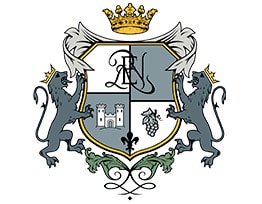The Cassini map drawn up in 1756 already mentions a property called Bertinat at the current location of the estate’s mansion.
At that time, the estate was a farm that extended over 30 hectares and which practiced mixed farming: breeding, cultivation of cereals and viticulture (until the appearance of Phylloxera in 1866).
After the phylloxera crisis, an important boom in viticulture led to the replanting of the vines.
According to the Guide Feret, in 1893, Bertinat was considered a “cru bourgeois” Saint Sulpice in the same way as the Château Monbousquet.
Illustrious owners
In the 18th century, the de Sèze family owned a strip of land stretching from Château Troplong Mondot to the Dordogne, passing through Château Croix de Bertinat.
The de Sèze family is a former French bourgeoisie family which includes among its members jurats, lawyers, doctors, high officials, etc.
It was also illustrated by Raymond de Sèze, lawyer of King Louis XVI, who defended him in 1792 in front of the National Convention and who was elevated to the peerage of France in 1815 then titled count in 1817 under the Second Restoration.
The last descendants of the de Sèze family who lived at Château Croix de Bertinat are the Countess and the Vicomtesse de Sèze.
Above the fireplace can be seen the coat of arms of the de Sèze family: a swan holding bunches of grapes and ears of wheat.
Nowadays
In the middle of the 19th century, following the inheritance of the estate, the property was separated from its vines and the plots were divided.
From 1960, the vineyard was gradually taken over and restructured by Christian Lafaye and took the name of the mission cross erected in 1872 in front of the property and known as the Croix de Bertinat.
In 2012, the old mansion and the vineyard were brought back together, thus reconstituting the estate as it existed a century and a half earlier.
In order to combine tradition and modernity, a complete restructuring of the cellar was carried out in 2013 to exploit the full potential of this magnificent terroir.
It was also during this period that a new tasting room was built to welcome professionals and individuals. The tastings are an opportunity to share convivial moments with a view of the winery on one side and a view of the southern slopes of Saint-Emilion on the other.
The vineyard
Located 3 km southwest of the village of Saint-Emilion and 500 m east of the village of Saint Sulpice de Faleyrens, one of the 8 municipalities constituting the jurisdiction of Saint-Emilion, the Château Croix de Bertinat today includes 8.3 hectares of vines in AOC Saint-Emilion, 0.3 hectares in AOC Bordeaux, as well as a winemaking and aging cellar.
Our vines are planted on sandy-gravelly soils, a vein of deep siliceous gravel running through the property. These silica pebbles have been carried and deposited by rivers over the millennia.
This terroir is suitable for the production of high quality wines with silky tannins and harmonious aromas.
Grape varieties
In AOC Saint-Émilion
Grand Cru
60 % Merlot Noir
35 % Cabernet Franc
5 % Cabernet Sauvignon
Average age of the vines: 35 years
Several plots are between 50 and 70 years old
In AOC Bordeaux
100 % Sauvignon Gris

Cultivation of the vine
Committed to sustainable winegrowing, we promote the respect of the plants in their environment and we adjust our interventions in the field to the climatic hazards, the observation and the knowledge of the soil and the vine in order to minimize the use of plant health treatments. Since 2018, our approach has been certified by Terra Vitis, a label that guarantees environmentally friendly
production methods.
The vines are pruned in simple Guyot shape, preserving a long branch and disbudding carefully to facilitate the spreading of bunches and ensuring good maturation conditions. The soil is worked mechanically. We keep the vines healthy by manual leaf stripping, thinning and harvesting in green if necessary.
Harvest and winemaking
The grapes are harvested at optimum maturity. Only plot per plot observation can accurately determine the ideal harvest date.
The quality of our terroirs of hot gravels allows us to lead the Cabernets to perfect maturity. They will play a key role in the blends to which they will bring all their aromatic finesse.
The grapes are sorted on arrival at the winery to eliminate the berries that do not meet the chosen criteria (size, aspect, color) while respecting the integrity of the fruit, a key condition to high quality winemaking.
The vatting continues for several weeks, depending on the vintage. The alcoholic fermentation, then the malolactic fermentation, are controlled in thermoregulated vats.
Ageing
Our wines are then aged in barrels (for Saint-Emilion Grand Cru) or in vats (for Saint-Emilion). We carefully select our barrels, all made in French oak, for their ability to bring our wines the right touch of finesse that will blend with the aromas and natural tannins of our grapes without denaturing them by an excess of wood taste.
The subtle alchemy of the blending and the ageing, culmination of months of work in the vineyard and the cellar, defines the character of the wines of Château Croix de Bertinat, a mix of classicism and modernity, the expression of its grape varieties, its terroirs, and the personality of the men and women who produced them.






